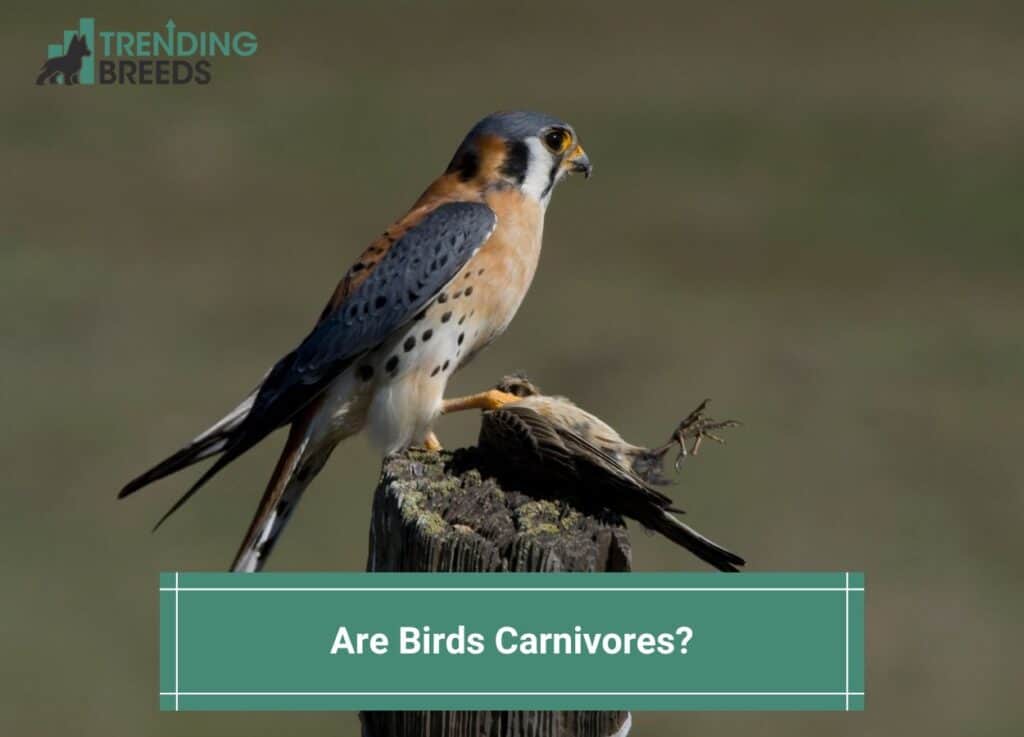
There are a variety of different birds on the planet. Some can fly, some don’t, some stay on top of shorelines, whereas others reside in-land. You may have heard about birds that eat meat. But are birds carnivores?
Yes, carnivorous birds do exist. It’s important to note that carnivorous birds are an exception as not all birds eat meat. It is also dependent on the amount of meat they consume.
The majority of birds, from tiny flycatchers to huge eagles, are carnivores, but many omnivores make the most of their surroundings.
Keep reading below for more information.
Before you scroll further down this guide, check out these other bird-related articles: Why Do Birds Kiss? and Best Bird Rescues in Australia.
Table of Contents
What is a Carnivore?
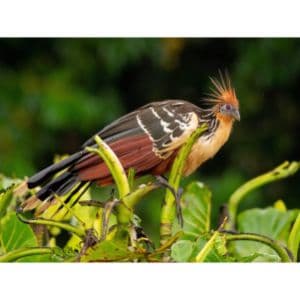
Carnivores are defined as organisms that primarily consume meat. Carnivores are sometimes referred to as predators. Carnivores’ prey is any living thing that they consume.
The food chain is an overview of what kinds of species eat what kinds of other organisms in the wild, and carnivores play a significant role in this process.
The trophic levels in a food chain classify organisms according to their nutritional requirements.
Three levels can distinguish the food chain.
The most basic trophic level consists of autotrophs or self-feeding organisms. Plants and algae fall into this category.
The second trophic level consists of herbivores, or species that feed only on plants and other autotrophs. Third in the food web are the carnivores.
Animals that eat plant and animal matter, fungi and other microorganisms, are known as omnivores, and they are also included in the third trophic level.
The term “producer” refers to autotrophs as they create their food. Animals that eat both plants and meat are called consumers.
Herbivores are considered to be primary consumers. The term “secondary consumers” refers to carnivores and omnivores.
Many carnivores feast upon herbivores. Some consume omnivores, while others consume other carnivores.
The term “tertiary consumer” refers to carnivores that feed solely on other carnivores.
Orcas, sometimes known as killer whales, are typical tertiary consumers. Animals like seals and sea lions are prey for killer whales. Carnivorous marine mammals such as seals and sea lions thrive on seafood like fish, squid, and octopi.
Types of Carnivores
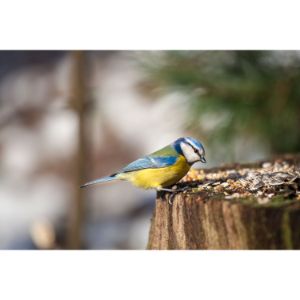
Following are some of the types of carnivores.
Obligate Carnivores
Obligate carnivores are animals that cannot survive without meat. Plants are indigestible to their bodies.
The dietary requirements of obligate carnivores cannot be met by plant foods. From domesticated house cats to colossal tigers, all felines must eat meat to survive.
Hypercarnivores

The vast majority of carnivores do not have to eat only meat. If an organism gets at least 70% of its nutrition from meat, it is considered a hypercarnivore.
The remainder of their diet consists of plants, fungi, and several other nutrients. Hypercarnivory is shared by all obligate carnivores, including cats.
Sea stars, which feed almost exclusively on clams and oysters, are likewise considered to be hypercarnivores.
Mesocarnivores
At least half of a mesocarnivore’s diet must consist of animal products. Foxes are classified as mesocarnivores. Fruits, veggies, and mushrooms are also part of their diet.
Hypocarnivores
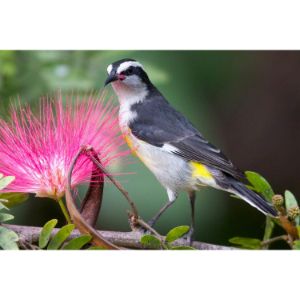
Hypocarnivores get less than 30% of their calories from meat. The vast majority of bear species are classified as hypocarnivores.
They consume various foods, including meat, fish, berries, nuts, and even bulbs and roots. Bears and other hypocarnivores are included in the category of omnivores.
Are Birds Carnivores?
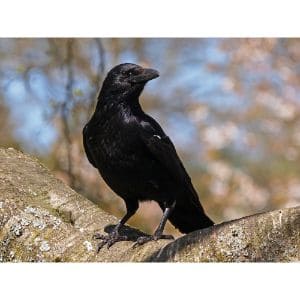
The diets of some birds indeed place them in the category of carnivores.
This is not true for every species, though. Additionally, some distinctions can be made between several types of carnivorous birds based on the main food item that they consume.
In order to maintain ecosystems and food chains in good health, there must be some degree of diversity among the different species of birds.
There wouldn’t be enough seed-eating and nectar-drinking birds to help plants reproduce and spread their seeds if they were all carnivorous.
If all birds consumed only grains or insects instead of other foods, there would be no avian predators to keep the population in check. Every species of bird fills a specific function in the ecosystem in which it lives.
Species of birds are considered carnivorous when they consume primarily flesh and other prey items. Carnivorous birds are those that rely nearly entirely on their diet of meat to stay alive.
The birds of prey are the most renowned group in this category. Raptors, like hawks, eagles, owls, and others, spend most of their time foraging for food and are considered the top predators on the planet.
Mice, rabbits, and other birds are common fare for them. Intriguing information about these birds’ diets and their effects on the ecosystem can be gleaned from studies of bones found near nest locations.
Research conducted on the bones found close to nesting areas typically yields unique insights into these birds’ diets and their impact on the ecology.
Types of Carnivorous Birds
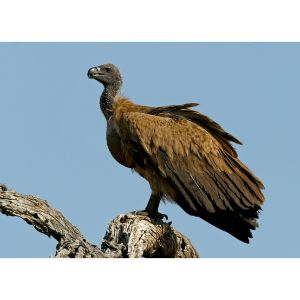
Following are different kinds of carnivorous birds.
1. Scavengers

Birds that eat meat aren’t all predators. Some animals prefer to eat dead organisms. Several bird species are known to scavenge together.
This entails looking for dead animals or their remains following a hunt. Although most raptors prefer to hunt rather than feed on roadkill, some species take advantage of this situation.
Instead of spending their energy hunting, vultures actively seek out carrion. They can clean up after a hunt and detect gases given off by decaying bodies from great distances.
Another great example is the carrion crow, which gets its name from feeding on dead animals but eats more than just carrion. Eggs, small mammals, amphibians, insects, fruit, and seeds are all fair game for these opportunists.
Carnivorous birds can be further classified by their preferred meat source.
Due to the wide variety of bird families and feeding habits, it is not possible to categorize all birds as either carnivorous or herbivorous.
Different diets have developed because of the wide variety of meat available. These birds can be categorized as:
2. Avivorous

Birds that primarily eat other birds are referred to as avivorous.
People who hate hawks because they kill songbirds in their gardens don’t understand that these birds of prey play an important role in maintaining a healthy ecosystem by specializing in hunting other birds.
Peregrine falcons are avivores as well, feeding primarily on pigeons in cities and shorebirds in coastal areas.
3. Molluscivorous

The term “molluscivorous” refers to a group of birds that primarily consume mollusks for food.
This includes many shorebird species, as these birds spend a lot of time foraging for food in coastal environments like mudflats and beaches.
Numerous bird species can be seen congregating in one area to feed in large flocks.
They’ve developed specialized feeding mechanisms that allow them to live together and feel secure in large groups. Long-billed birds will forage further out from the shore than their shorter-billed counterparts.
4. Insectivorous

Birds that mostly eat insects are known as insectivorous. Insectivorous birds such as flycatchers and swallows serve as excellent examples.
Although many species feed on moths and butterflies, experienced hunters can take much larger prey.
There are also falcon species that can be seen swooping down on dragonflies over bodies of water. Some of them will even consume them in midair.
5. Piscivorous

Piscivorous birds rely heavily on aquatic life for survival. The heron is an example of a bird that patiently waits by the water to catch a meal of larger fish.
They also eat animals and amphibians, but fish make up the bulk of their diet.
Predatory birds like ospreys and bald eagles also thrive in this environment because of their ability to catch and devour fish.
Birds that dive into lakes and oceans will eat their share, too, and they’ll get better at it over time.
6. Omnivorous Birds
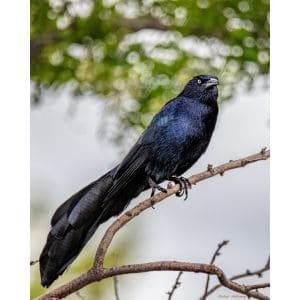
Numerous omnivorous bird species exist as well. Many bird species include insects as a significant portion of their diet without considering them a key food source.
Birds of all kinds, songbirds included, will eat just about anything if it will sustain their survival.
Most of their diet comes from the seeds and nuts offered at bird feeders, although they will also consume mollusks and insects.
Due to their high-water content, mealworms and caterpillars are vital to the diets of developing chicks.
Characteristics of Carnivorous Birds
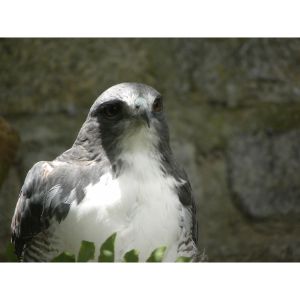
Many birds can be classified as carnivores, including raptors, owls, and those that feed primarily on fish and insects.
Their main source of nutrition comes from either hunting or scavenging for deceased animals.
The Harris hawk is the only species of bird that works together as a family to hunt. Several birds may swoop down on a single prey item and battle over it, with only the mating partner allowed to share.
The bald eagle and the peregrine falcon are known to steal food from other birds.
The ability to hunt or scavenge is exemplified by a common trait shared by many predatory bird species:
Superb vision: When searching for food at a distance or while flying high, most animals rely mostly on their eyesight.
Strong feet: Most birds of prey are equipped with talons or feet that allow them to grab prey from the water, the ground, or the air and then crush it with a piercing blow from their nails.
Bent beaks: Birds with bent beaks are better able to puncture prey, scoop it up, or dig up insects from the ground.
How Do Carnivorous Birds Hunt?
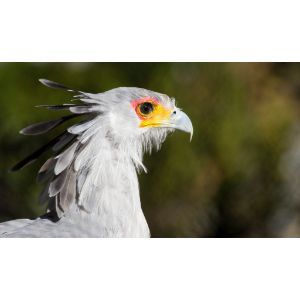
Prey for carnivorous birds can be found both on the ground and in the air. Most birds will change their hunting and feeding strategies based on their environment.
Soaring and swooping: gradually circling, utilizing sharp eyesight to locate prey; keeping a safe distance from possible victims until launching a steep plunge to attack.
Hiding: Keeping quiet or hiding in plain sight; waiting in ambush for an opportunity to pounce on an unsuspecting victim.
Scent or Sound: Birds can use their sense of smell or hearing to locate their meal, as in the case of turkey vultures sniffing for carrion, or their sense of hearing to stealthily glide to their target, as in the case of nocturnal owls.
Dine and Dash: Birds feasting on a large carcass can “dine and dash,” or leave to wait for a good opportunity to steal food before returning to their meal.
Keep an eye out for other birds or animals that may exhibit predatory behavior.
Some birds will wait until other carnivorous birds or animals are feeding, then they will either drive them away or overwhelm them and steal their food.
Frequently Asked Questions
What is the most obedient bird?
The mynah bird is the bird most famous for its ability to be trained.
What is the most talkative bird ever?
The African grey parrot is considered one of the chattiest birds.
What is the most common bird?
The most common bird is a domestic chicken, which wildly outnumbers other bird populations.
So Are Birds Carnivores?
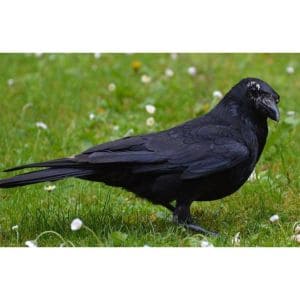
In conclusion, there are many different kinds of birds, and while some may be carnivores, others are not.
The classification of birds as carnivorous also depends on the amount of meat they consume and whether it’s their primary diet.
If you find this guide, “Are Birds Carnivores,” informative and helpful, you can check out these other animal-related articles from our team:
- Are Blue Heelers Good With Kids?
- Are Mini Aussies Hypoallergenic?
- Are Pine Cones Good or Bad for Dogs?
You can learn more about this topic by watching “15 CARNIVOROUS BIRDS” down below:




